The Museum of London Docklands is in West India Quay, Limehouse, London. I've been to this museum before, but not recently. The first time I visited was on a summer's day when they had a street festival going on. It was such a lovely time- I chilled out on a floating beach under the shadow of the Canary Wharf tower and I ate a massively hot chilli from a condiment stall, therefore winning a free bottle of chilli sauce for my bravery... (I had to sneak away and privately devour my bottle of water afterwards. Boy, was my gob on fire, and no doubt my jacksie was later!😉) The second time I popped in was over ten years ago, when they had a Jack the Ripper exhibition running.
This time, their exhibition was called Secret Rivers, and explored our city's hidden watercourses. It was quite a while ago that I visited- it was the end of August and- in sharp contrast to the dreary, wet, cold weather we've been having recently- a rather warm day. I just haven't had the time to continuously blog, what with undertaking my MA Creative Writing course, which must take precedence. I don't doubt that by the time I publish this, their special exhibition will have been replaced by another.
Walking up West India Quay...
This time, their exhibition was called Secret Rivers, and explored our city's hidden watercourses. It was quite a while ago that I visited- it was the end of August and- in sharp contrast to the dreary, wet, cold weather we've been having recently- a rather warm day. I just haven't had the time to continuously blog, what with undertaking my MA Creative Writing course, which must take precedence. I don't doubt that by the time I publish this, their special exhibition will have been replaced by another.
Walking up West India Quay...
Bars and restaurants sit in the wharves to the right of the picture...
The view of One Canada Square. The iconic tower is commonly simply known as 'Canary Wharf'.
...At 770 feet (235m) tall, it is the second tallest building in London. The tallest is the Shard.
Robert Milligan (1746-1809) was a prominent merchant and ship owner. He was the driving force behind the construction of West India Docks and his statue is right outside the museum.
We tackled the exhibition first and this map explains the Thames and the hidden rivers that we're about to be educated about...
This Middle Bronze Age skull dates from 1260-900 B.C. and is one of 250 ancient human skeletal remains which have been found near the Thames.
Profane to Sacred, 2018, by Sarah Wilson.
This is a cope (ceremonial cloak) which was worn by the Bishop of Lambeth for the 2019 Blessing of the Thames.
Cabinet of discovered artefacts...
This was entitled A Mudlark's Puzzle and depicts the items found mixed upon the mud and gravel of the floor of the Thames, when the tide goes out twice a day.
Urns and what looks like part of a basket. Oh, and a pair of shoes...
I would be drawn to these...😉
Old toilet seats...
I just HAD to take this photo of ye olde khazis, being the lavatorial soul that I am...😉 They sat in front of a large screen playing a programme about the River Fleet, on a loop. The River Fleet is the largest of London's subterranean waterways and its headwaters are two streams which begin at Hamstead Heath, join at Camden Town and descend underground there, to become sewers.
The River Fleet feeds into the Thames at Ludgate Circus, and gives its name to Fleet Street.
This painting is called Entrance to the Fleet Canal (c.1750) by an unknown follower of Samuel Scott.
You can take part on paid walking tours which follow the path of the River Fleet, but myself and my SuperDean want to look up the route and tackle it our own way...
Cabinet of curiosities from Roman times, including key moments in the life of the Thames...
This section contains a pot which is supposed to smell like the River Neckinger, which powered mills and factories in Southwark.
It smelt of soot.
This pot represents the Westbourne, which was changed course to create the Serpentine in leafy Hyde Park.
It smelled of flowers.
The map in the centre is a cholera map of the metropolis. The dark areas contain those areas most infected by the disease.
Folly Ditch, Jacob's Island (1887) by James Lawson Stewart. Jacob's Island (Bermondsey) was one of the worse slums in London, and is described by Charles Dickens in Oliver Twist.
We have things such as bowling balls and a toy boat in here...
Tyburn Salmon (c.2000) by Simon Gudgeon.
Watershed model of the Effra Watershed (1992/2019) by Katie Lloyd Thomas. The Effra is in south London, forms a narrow path on high ground, has several tributary streams and joins the Thames at Vauxhall. The model demonstrates how London might be remodelled to accommodate the restored river.
Junction of the Lea and Pudding Mill River (2006) by Mike Seabourne.
View of Wandsworth, Surrey (1819) by John Burges Watson.
An Anecdotal View of Walbrook (2014) by Adam Dent.
Ripples in the Water...
Close-up of this data flow artwork...
Novels which feature the River Thames...
Although I'm not quite sure why The Tea Rose, By Jennifer Donnelly wasn't included. It's set in east London, is about the London docks during Jack the Ripper's time and used to be for sale in their shop.
Read it- it's one of my all-time favourite books.😀
London art images...
With the exhibition over, we ventured into the static part of the museum. This little boat is a 1934 skiff.
The museum was opened in 2003 and you start at the top, in a big room dedicated to all things of warehousing relevance...
The building was once a Georgian sugar warehouse, built in 1802...
Tools and navigational equipment pertaining to ship building...
The Falmouth East Indiaman was launched in 1752...
The Honourable East India Company monopolised trade between England and the far East and imported many things, such as these objects. You can see a ghostly Vain Old Tart reflected here!
The gruesome gibbet at the Execution Dock. This part of the museum shows you what your fate would be if you were a naughty boy...
Slavery...
Sugar cane and slavery...
The slave trade. Not a proud part of British history. It wasn't until 1833 that an act was passed outlawing slavery in all British colonies.
Brunel's Thames Tunnel. We saw much more to do with this at the Brunel Museum, earlier in the year.
Here is the link:- http://elainerockett.blogspot.com/search?q=brunel
The whaling industry. In the big pot, blubber would have been rendered into oil.
These uniforms are in a cabinet explaining the river as a venue for ceremonies...
This depicts Lord Nelson's funeral procession...
Trophies...
Ceremonial swords...
In the dark depths of Sailortown, which is a mock-up of the Dockland's life of yesteryear...
Ship chandler...
It's quite a realistic little section...
Mouse in the house. Or maybe that's a rat...
Dean where he is at his happiest, in the pub! He moved, so this photo looks a bit spooky...
Behind the bar...
Sailor's home...
Rat traps...
Moving on and the Princess Alice was a passenger steam paddler which sank in 1878. There used to be a pub named after the ship in Forest Gate, London, where I was born.
I believe this is a blacksmith's forge...
Fire cart and a SuperDean...
Fires at riversides and in warehouses were, unfortunately, a regular development...
The sleazier side of a sailor's life. When I was in Plymouth (the Ocean City) and walking through the marina, I remember describing a sailor's needs, once he left his ship, to Dean as; 'All they want is a bath, a bit of grub and then some boom-boom...'
1940s dining room. I wish this photo had come out a bit sharper. Oh well, I've only myself to blame...
But do you like the distorted Vain Old Tart in the mirror?
Apothecary...
This was a 'guess the smells' section and contained things like tea and cloves. I identified all of the substances correctly!
Brewery...
Winch...
Bottling it up...
Keeping accounts...
Over to WWII and this is an Anderson shelter...
Personal shelter. I would have struggled with being in here- it's a claustrophobic's nightmare...
Gas mask...
Wartime volunteer cabinet...
Incendiary Attack (1940) by William Ware.
I love this painting and it reminds me of Jackson Pollock, who I studied on my art foundation course.
Part of an iron column, melted by the Blitz...
You'd know about it if one of these dropped on your head...
Wartime mobile kitchen. It's a very poignant part of the museum.
Chill-out area. We didn't linger, but i took a photo as I loved the colours and the atmosphere.
Entering a newer, more positive time...
The Ronan Point disaster of 1968, where a building collapsed like a stack of cards. After that, high-rise blocks were no longer constructed like this in the UK. It was built in the same way as the World Trade Center.


The Thames Barrier. I remembering it opening, in 1984.
Docklands' development. This occured in the 1980s.
The community reacted to the changes with mixed feelings...
Advertisement...
Housing development model...
Underground station architecture...
This is where you leave this part of the museum...
Problems...
Of course, we have to have a Vain Old Tart photograph...
Sainsbury Study Centre...
This is a 1930s-1940s display and contains a bakery. I was hungry and through these buns looked yummy!
Ship memorabilia...
I adored these Thames mugs and thought about getting one for the SuperDean, for his impending birthday... But they wanted £19 for one, so my thoughts on that were that they could go and get stuffed!
He'd expressed a liking for these salt and pepper pots, so this is a PDF of the set I found on eBay, which became one of his pressies instead...
Different exhibitions are now showing at the museum, it's free to enter and I'd definitely go back.
TTFN
The Miss Elaineous
xxxxxxxxxxxxxxxxxxxxxxxxxx
xxx
x











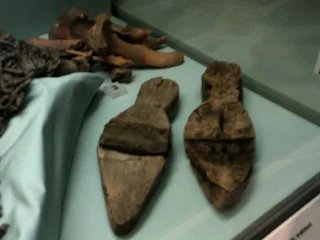








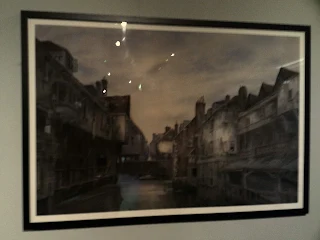






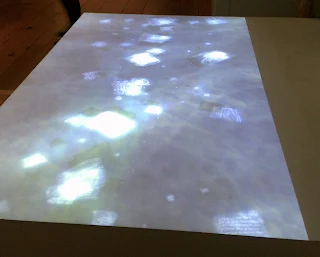


















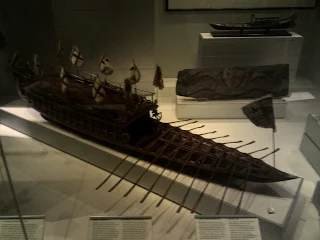
































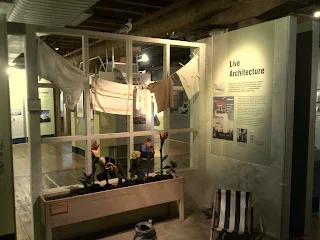



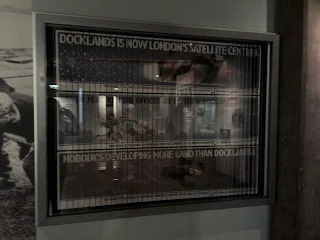










No comments:
Post a Comment